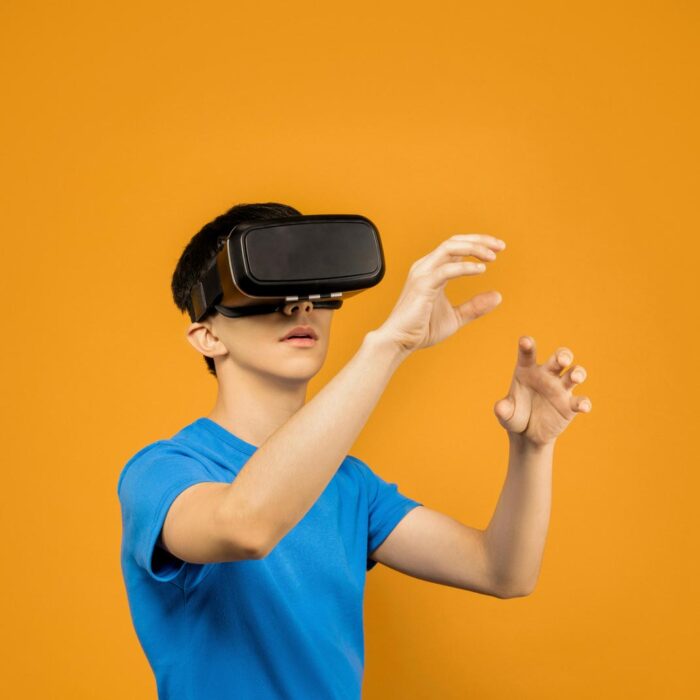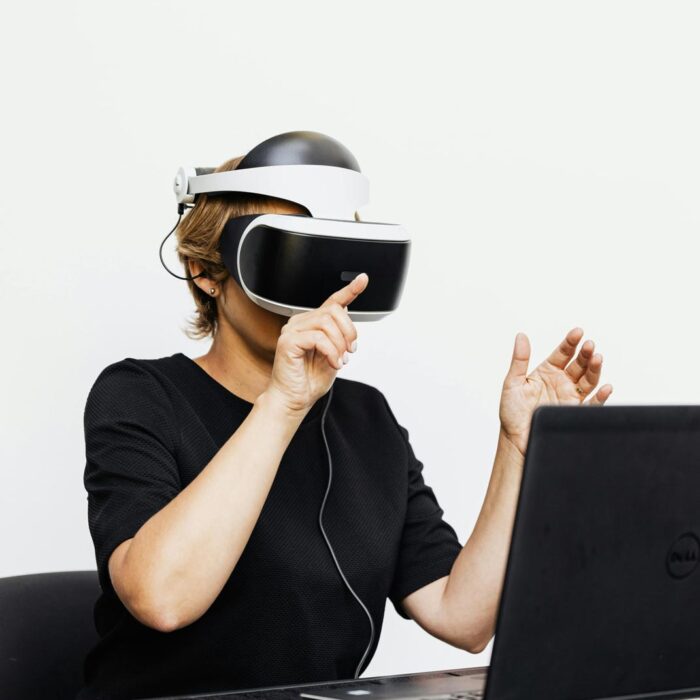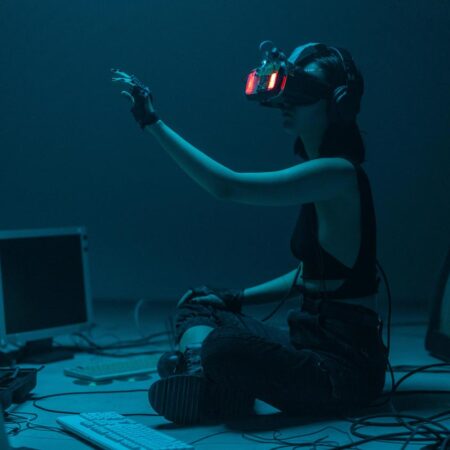The world of content marketing is constantly changing. With each passing day, brands are looking for new ways to connect with their audiences and create memorable experiences. In an increasingly saturated digital landscape, standing out from the competition is crucial. That's where augmented reality (AR) and immersive experiences come in, technologies with the potential to revolutionize the way brands interact with consumers.
But are AR and immersive experiences really the future of content marketing? In this article, we will explore the potential of these innovative technologies and how they can be used to create more engaging, personalized and effective marketing campaigns.
What is Augmented Reality and Immersive Experiences?
Augmented reality superimposes computer-generated images onto the real world, through devices such as smartphones or tablets, creating an interactive experience that combines the physical and digital worlds. Imagine, for example, using your smartphone to preview what a piece of furniture would look like in your living room before buying it, or virtually trying on different shades of lipstick through a filter in an app.
Immersive experiences, in turn, involve the user in a simulated digital environment, providing a sense of presence and interaction. While virtual reality (VR) is often associated with immersive experiences, AR can also create immersive experiences through interactive games, social media filters, and other applications that allow the user to interact with digital content in deeper ways.

Benefits of AR and Immersive Experiences in Content Marketing
AR and immersive experiences offer a number of advantages for brands looking to innovate their content marketing strategies:
- Increased audience engagement: By providing interactive, personalized experiences, AR is able to capture consumers' attention more effectively than traditional methods like static ads or passive videos.
- Creating interactive and memorable content: The experiences powered by AR are memorable and shareable, which increases campaign reach and brand recognition.
- Customer Experience Improvement: AR can be used to improve the shopping experience by allowing customers to view products in 3D, try on clothes virtually, or get detailed information about a product through their smartphone.
- Increased conversion rates: By providing a more interactive and informative shopping experience, AR can influence purchasing decisions and drive sales.
Examples of Using AR in Content Marketing
Several brands are already successfully using AR in their marketing strategies. Let’s look at some practical examples:
- Retail: The IKEA Place app allows users to view virtual furniture in their homes. Clothing stores like Zara and Timberland have already implemented virtual fitting rooms that allow customers to try on clothes without having to undress. Using their smartphone's camera, customers can point to products in a physical store and obtain detailed information about them, such as composition, origin and opinions from other customers.
- Automotive Industry: Automakers like BMW and Audi have created virtual showrooms where customers can explore car models in detail, customize their options and even take virtual test drives.
- Tourism: Through AR applications, tourists can point their smartphone at historical monuments and obtain information about their history and architecture, view reconstructions of what they looked like in the past, or even interact with virtual characters that guide them around the city.
- Experiential Marketing: Pepsi created an interactive advertising campaign at a bus stop that simulated an alien invasion, providing passengers with a surprising and memorable experience.
Challenges of Implementing AR in Marketing
Despite the enormous potential of AR, there are some challenges that brands must take into consideration:
- Costs: Developing and implementing AR experiences can be expensive, requiring investment in software, hardware, and specialized content creation.
- Quality Content: For AR campaigns to be effective, it is crucial to create relevant, engaging and high-quality content.
- Privacy and Security: The collection and use of user data in AR experiments raises privacy and security concerns that must be carefully considered.
The Future of AR and Immersive Experiences in Marketing
The integration of AR with other technologies, such as artificial intelligence (AI) and the internet of things (IoT), opens up a range of new possibilities for content marketing. In the future we can expect:
- More personalized experiences: AI will enable you to create AR experiences that meet each consumer's individual preferences and needs.
- Greater immersion: The use of wearable devices such as AR glasses will lead to even more immersive experiences, seamlessly integrating digital content into the real world.
- Impact on consumer behavior: AR influences purchasing decisions by allowing consumers to virtually try on products and obtain detailed information about them. Brands must be prepared to meet consumer expectations for personalized and interactive experiences.

AR and immersive experiences are powerful tools for content marketing, offering brands new ways to engage audiences and achieve their marketing goals. As these technologies continue to evolve, it is crucial that brands explore their potential and integrate them into their marketing strategies.
If you're looking to innovate and create memorable experiences for your audience, AR and immersive experiences are the way to go. Try it, explore the possibilities and prepare for the future of content marketing!




![[Vídeo] Coca-Cola Aposta em Anúncio de Natal com IA e Recebe Críticas Negativas](https://solangerainha.com/wp-content/uploads/2024/11/pexels-polina-tankilevitch-4109084-copy-450x450.webp)





No Comment! Be the first one.